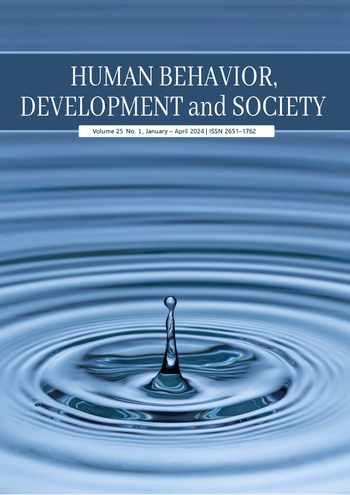Obscure Biblical Allusions in Robert Frost’s “Mending Wall”
Main Article Content
Abstract
Allusions are implied or indirect references that give writing aesthetic value. Robert Frost used allusions in his poems, but his Biblical allusions in the poem, “Mending Wall”, have not yet been studied in detail. Perhaps the reason is that they are obscure rather than overtly present in the poem. The purpose of the study was to analyze this poem’s obscure Biblical allusions through literary research. Numerous obscure Biblical allusions were discovered, including the poem’s title “Mending Wall”, which alluded to God’s salvation as a mending process. “He is all pine” alludes to wood used to make the cross for the Crucifixion of Christ; “apple orchard” refers to the Garden of Eden; “good neighbor” to Jesus’ command to love one’s neighbor in the parable of the “Good Samaritan;” “loaves” to the miracle of loaves and fishes; and “Bringing a stone … In each hand” denotes the tablets of the Ten Commandments carried by Moses. Thus, all these references used in Frost’s poem have Biblical affiliations and represent the obscure Biblical allusions hidden in this poem.
Article Details

This work is licensed under a Creative Commons Attribution-NonCommercial-NoDerivatives 4.0 International License.
Copyright: Asia-Pacific International University reserve exclusive rights to publish, reproduce and distribute the manuscript and all contents therein.
References
Samuel 25:16. (2010). New King James Version. Andrews University Press.
Ahmed, K.M., & Al-Gobaei, F.A. (2013). Treatment of nature in the selected poems of Robert frost: Quest for humanism and symbolic representation. Journal of Al-Frahedis Arts, 5(17), 651–663.
Arms, G., & Henry, N. (1979). Frost’s mending wall. The Explicator, 37(3), 30–32. https://doi.org/10.1080/00144940.1979.9938577
Buckley, L. (2017). The tree as sacred symbol in St. Augustine’s confessions and Dante’s divine comedy [Research paper]. Academia. https://www.academia.edu/35446941/The_Tree_as_Sacred_Symbol_in_St_Augustines_ Confessions_and_Dantes_Divine_Comedy
Cook, R. L. (1976). Robert Frost: A living voice. In The Georgia Review (pp. 447–460). https://www.jstor.org/stable/41399672#metada.
Copland, S., & Peat, S. (2016). Mending walls and making neighbors: spatial metaphors in the new modernist studies. Intervalla, 4, 1–29.
Dreisbach, D.L. (2007). The “wall of separation” motif in biblical literature and western political and legal thought. Liberty University Law Review, 2, 79–106.
Dubinsky, J.M. (1995). War and rumors of war in frost. The Robert Frost Review, 5, 1–22. http://www.jstor.org/stable/43897138
Ex. 32:19. (2010). New King James Version. Andrews University Press.
Faggen, R. (2008). The Cambridge introduction to Robert Frost. Cambridge University Press.
Genesis 2:8-9. (2010). New King James Version. Andrews University Press.
Grace, W. J. (1939). Teaching poetic appreciation through quantitative Analysis. College English, 1(3), 222–227. https://doi.org/10.2307/371270
Hinrichsen, L., & Dempsey, S. (2011). The good neighbor: Robert Frost and the ethics of community. The Robert Frost Review, 21, 8–23.
Irwin, W. (2001). What is an allusion? Journal of Aesthetics and Art Criticism, 59(3), 287–297. https://doi.org/10.1111/1540-6245.00026
Janik, E. (2011). Apple: A global history. Reaktion Books Ltd.
Lathem, E. C. (Ed.). (1969). The poetry of Robert Frost: The collected poems, complete and unabridged. Holt, Rinehart and Winston.
Latif, A., Ajamal, M., & Maqbool, S. (2022). A stylistic analysis of Robert Frost’s selected poems. Journal of Development and Social Sciences, 3(2), 71–81. https://doi.org/10.47205/jdss.2022(3-II)08
Lewis, G. K. (2022). Britannica. In Boston. https://www.britannica.com/place/Boston
Luce, R. (2000). Mending walls: Using a reader-response approach to teach poetry. In N.J. Karolides (Ed.), Reader response in secondary and college classrooms (pp. 93–94). Routledge Taylor and Francis Group. https://books.google.co.th/books?hl=en&lr=&id=ZUlC_6RO0BoC&oi=fnd&pg=PA93&dq=related:j3UhYrM1HnEJ:scholar.google.com/&ots=EToCHTEeOS&sig=K8AwU5gOEH7CGlOQERmmMGV9dzs&redir_esc=y#v=onepage&q&f=false
Madsen, K. D., & Ruderman, D. B. (2016). Robert Frost’s ambivalence: Borders and boundaries in poetic and political discourse. Political Geography, 55, 82–91. https://doi.org/10.1016/j.polgeo.2016.06.003
Matthew 22:37-39. (2010). New King James Version. Andrews University Press.
Newdick, R.S. (1936). Robert Frost as teacher of literature and composition. The English Journal, 25(8), 632–637. https://doi.org/10.2307/804974
Pack, R. (2003). Belief and uncertaintly in the poetry of Robert Frost. University Press of New England. https://books.google.co.th/books?hl=en&lr=&id=amUdiZLtBJcC&oi=fnd&pg=PR9&dq=Robert+Frost+and+allusion&ots=T6aHs8fb4F&sig=5lLTa_vbahACi168c40JmSuKXVU&redir_esc=y#v=onepage&q=Robert%20Frost%20and%20allusion&f=false
Parfitt, M. (1996). Robert Frost’s “Modern Georgics.” The Robert Frost Review, 6, 54–70. https://www.jstor.org/stable/43897155
Perlow, G.L., & Furman, A.C. (2017). On medicine and boundaries: Frost’s mending wall. Journal of General Internal Medicine, 32(7), 850–851. https://doi.org/10.1007/s11606-017-4058-2
Phillips, T. (2020). Standing up for evil: The price of knowledge in Frost’s “Mending Wall.” The Explicator, 78(3–4), 132–135. https://doi.org/10.1080/00144940.2020.1816880
Quinn, G. (1999). Frost’s synecdochic allusions. Resources for American Literary Study, 25(2), 254–264.
Robeck, Jr., C.M. (1999). Do “Good fences make good neighbors”? Evangelization, proselytism, and common witness. Asian Journal of Pentecostal Studies, 2(1), 87–103.
Sanders, D. (2007). Earth, time, and England: New light on Frost’s “Old-Stone Savage” and “Mending Wall.” The Robert Frost Review, 17, 43–59. http://www.jstor.org/stable/24727385
Selvi, M.D.T., & Malar, A.A. (2021). A critical analysis of Robert Frost poems. Journal of Language and Linguistics in Society, 1(2), 1–6. https://doi.org/10.55529/jlls.12.1.6
Sethi, D.D. (2018). Using Robert Frost’s mending wall to teach overcoming barriers to communication, 18(4), 43–47.
Srinivasarao, S. (2013). Nature poetry and modernity: A critical review on Robert Frost Poetry. Research Journal of English Language and Literature, 1(1), 161–164.
Tebbe, F. (1997). Awakening to Frost. In A. Wilson (Chair), The Harper Anthology of academic writing (pp. 125–129). William Rainey Harper College.
van Aarde, A. G. (1994). Chapter 2: The miraculous multiplication of loaves (Mt 14:13-21 and par): Historical criticism in perspective. HTS Teologiese Studies / Theological Studies. https://doi.org/10.4102/hts.v0i0.4437


